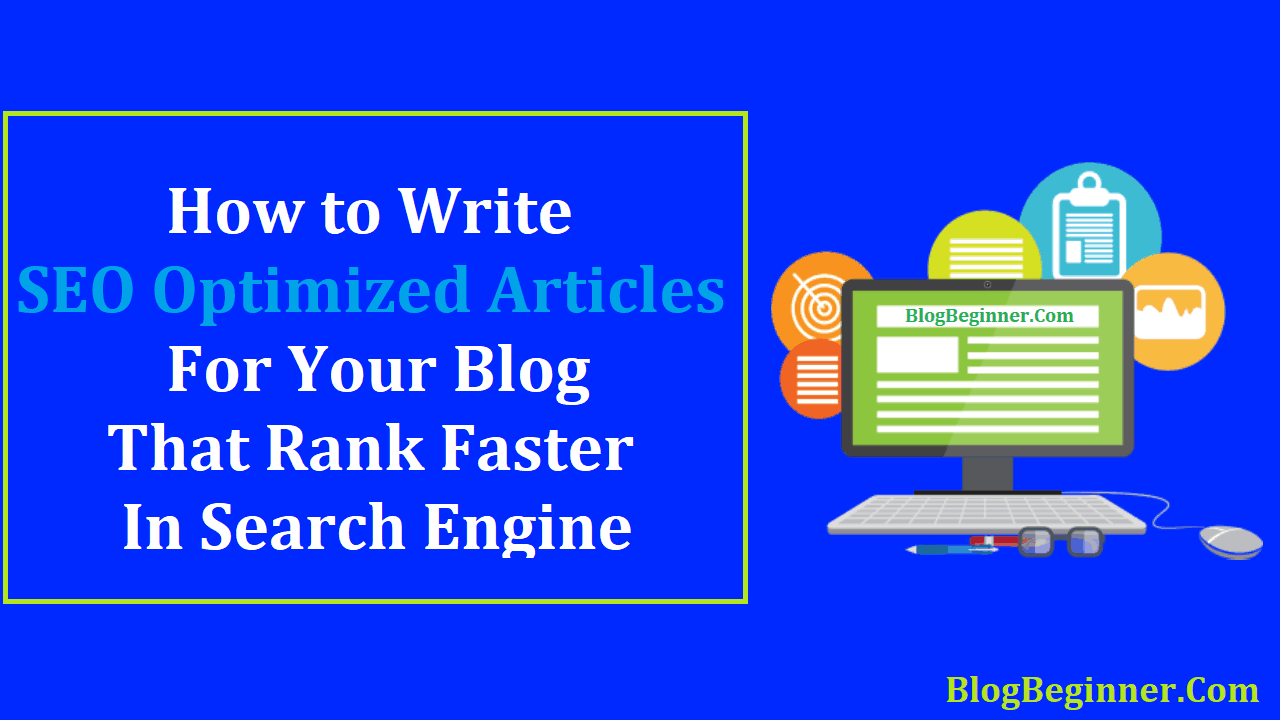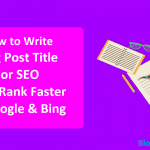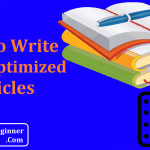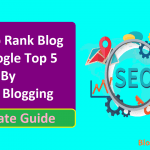Driving traffic to your website is not just about promoting your content with captivating headlines but more about optimizing that headline for search engines.
The titles you use should be the flower that brings in the bees, the magnet that pulls in readers even out of your small target audience.
For this, your titles should have specific ingredients, spices that add flavor to search engines.
A search engine bot should analyze billions of web pages and pull out one of your articles because it has the juice – words that the person searching for information typed into the search box.
We are talking about using the right keywords as well as SEO header tags. These are the two elements that will prevent your blog posts from getting lost in the web.
Even with detailed, interesting, and helpful content, you cannot get comments, likes or shares if your titles are bland and boring.
Great and catchy titles turn things around by boosting your social shares, website traffic, and eventually leads and sales.
But, how do you do it has failed before? How do you write SEO-friendly titles for your blog posts?
Contents In Page
1. Keyword Research
Keywords are, according to Backlinko’s Brian Dean, the compass for your SEO campaigns.
Keywords guide your steps while analyzing whether you are making any progress.
These words will help you figure out the fears, thoughts, pains, and the desires of your target market.
This means keyword research is invaluable.
Through keyword research, you’ll learn what search engines are looking for (Google’s RankBrain is looking for the meaning of the words you use to determine web pages on top of the SERPs), and you will also understand your customers.
Since keyword research is a time-consuming process, we will summarize it in three steps:
Coming up with potential keywords and using Google’s Search Suggestions
Plugging in the keywords into the Google Keyword Planner tool (also KeywordSpy, Moz Analytics’ Keyword Analysis Tool, or UberSuggest, etc.)
2. Picking the right keyword.
Following these three steps, you will have the most relevant keywords.
If the keyword appears on your post’s title, in the first paragraph, meta description, and a few other areas in your article, the chances of your article appearing on top of search engine result pages will increase.
While using keywords in the title is critical, you also need to use the keywords in the right way.
This means avoiding keyword stuffing and irrelevant keywords. Don’t forget to use the keyword you are using in the article.
3. Keep the title short and unique
A long title, though interesting, will easily get lost in other indexed pages.
You want to keep your titles short, interesting, unique, and with the right/ target keyword.
Keep the title to a minimum of 55 characters. Google cuts out articles with titles longer than 55 characters.
4. Copy Google AdWords Ads
A compelling title equals more clicks which in turn results in a higher ranking on Google.
Google AdWords Ads are a great resource because of the competitive keywords used.
The keywords result from hundreds of split tests which will maximize clicks.
So, you will be using copies from the ads to turn your headlines and titles into click magnets.
5. Include Numbers
If all else fail, use numbers. Numbers are a powerful currency in the SEO world and will increase your title’s and content’s visibility.
Numbers and prefix-suffix will increase CTR for your title.
Numbers optimize and transform titles making them more engaging.
6. Using Title Tags PowerUps
Powerups are just that, powerful words that boost your blog posts. Using powerups increases clicks to your site in SERPs, boosting traffic.
Confused?
Think of the words Guide, Awesome, Proven, How-To, Fast, New, Research, Amazing, Results, or Step-by-Step.
These words deliver an extra punch to your titles and make them more appealing and compelling.
Note that these words are also emotion-driven.
7. Trigger Words
Before someone seated next to you asks something, they first ask Google and if you don’t know the answer to the question asked, then you will ask them to Ask Google.
Well, think this way for your blog posts.
Since your blog posts are providing information, use trigger words for people to find you. Trigger words include Why, How, or What.
8. Using The Active Voice:
To write unique and high-quality SEO optimized articles you will need to enough active voice in your article. Active voice is one of the best ways to optimize your article.
Active voice improves the quality of your writing.
To write a high-quality article you will need to use active voice more than passive voice. High-quality SEO optimized article should have to use a 75%-80% sentence as an active voice of total sentences.
So try to add more active voice in your articles.
9. Keep The Title Relevant:
The title of your article that provided by H1 tag in WordPress should be relevant to your article. To rank faster in google and making your content high quality & unique you will definitely need to add a relevant title to your blog post.
Here one more thing to remember that you can also use Long Tail Keywords in your title to improve ranking in all search engines.
At last, I want to say to add highly searched keywords that relevant to your article.
10. Length Of Sentence :
Here you will need to confirm that you have written a good number of words in each & every sentence. I recommend doing this because people don’t want to read longer sentences in an article on the web.
If your blog reader finds too many long sentences in your article they will not read the complete blog.
To optimize the quality of your article you will need to add a maximum of 20 words per sentence of your blog.
Your article should have 80%-90$ sentence is no longer than 20 words/Sentence.
11. Length Of Paragraph:
To convert your article into the high-quality article you also need to check the length of each & every paragraph of your article. Peoples did not want to read a longer paragraph article.
Here I suggest you add 300 words per paragraph. 300 word is better and short that people can enjoy writing.
12. Using H1-H6 Tags:
You can use H1-H6 tags in your article to improve the readability of your article. By improving readability the quality of your blog will get automatically increased.
Other strategies include
- Using headline generators
Used correctly, these tips will result in an increase in traffic to your blog. The best part is that you don’t have to spend anything.








